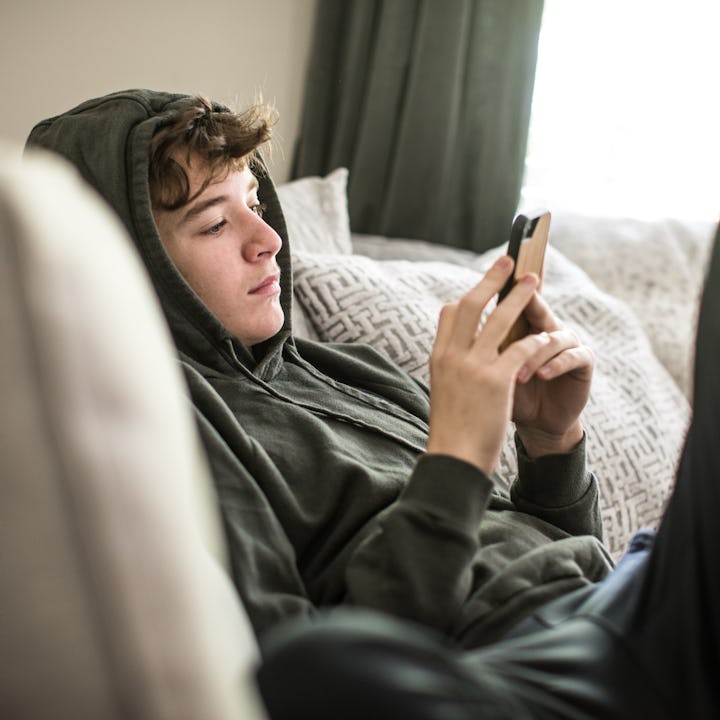A ‘Goldilocks’ Amount Of Online Time Might Be Good For Teens
A new study found that there’s a sweet spot between too much — and not enough — screen time.

It’s no secret that too much social media can wreak havoc on everyone’s mental health. And teens, who spent an average of 7 hours on a screen per day before the pandemic, can have an especially hard time managing their social media use.
But according to new research from Trinity College Dublin, there is actually a “Goldilocks amount” of time for teens to spend on social media: a sweet middle ground of how much time teens should spend online for their mental health.
Researchers surveyed roughly 6,000 teens between the ages of 13-18 and looked at the association between adolescent use of online engagement and mental wellbeing. Participants were asked to report how much time they spent online, along their activities, such as listening to music, chating with friends, or doing homework. The participants also submitted surveys on their emotional health, which where then compared to their online habits.
Participants who had a “low” amount of screen time spent up to 30 minutes online a day. The “moderate” user group spent between 61 and 90 minutes online, and the “high” online engagement group reported between 91 to 120 minutes a day online.
The study found that “Adjusting for prior psychiatric disorders and symptoms at the age of 9 and 13... high engagement in digital media strongly predicted worse mental health outcomes for both boys and girls.”
This makes sense, given the slew of already existing data that paints an ominous picture of social media’s negative impact on mental wellbeing. But what’s interesting is that completely eliminating screens doesn’t bode well, either.
“Furthermore, low use of digital media was associated with worse mental health for both boys and girls and was also predictive of peer problems for girls.”
This suggests being completely screen-free could be a detriment to a teen’s mental well-being, and it makes sense. So much of young people’s social lives are online, and to completely go off the grid can lead to social isolation.
"There is a simple narrative out there that more is worse. It is important to emphasize that online engagement is now a normal channel of social participation and non-use has consequences. Our findings also raise the possibility that moderate use is important in today's digital world and that low levels of online engagement carries its own risks," said Professor Richard Laye, Professor of Sociology and co-author of the paper.
The study’s lead author, Ross Brannigan, a former postdoctoral researcher in Trinity’s department of sociology, also acknowledged that trying to calculate what type of online activity can play a role as well, and that this study is only the tip of the iceberg in terms of studying mental health and online activity correlations.
“While these results are not causal or deterministic, our findings are an important first step on the path to revealing why these relationships exist. It will now be importance to build on these findings and further investigate why digital media engagement may be related to mental well-being.”
At the very least, it’s an important reminder that moderation is often better than extremes.